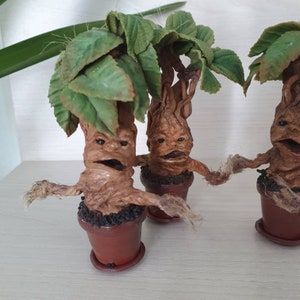
The drug has been used for the abduction of women as slaves in earlier times, and more recently by criminals in Colombia (where the drug is called burundanga). After the attack or robbery the victim suffers from amnesia, allowing the criminal to escape detection. Some of the effects of scopolamine are employed to good effect by criminals, as it can cause the victim to enter a zombie-like state during which they are powerless to resist.

The infamous Dr Crippen used scopolamine to kill his wife. In the Middle Ages it was often used for poisoning, the root being allowed to ferment to produce a poisonous brew. The root was highly prized for its reputed aphrodisiac properties as well as its toxic and therapeutic effects, which presumably made the effort of collection worth while. It is not clear what enticed the dog to do this or whether it survived the process, but the intrepid collector also needed to collect a sample of woman's urine and menstrual blood to sprinkle over the plant before it was removed from the ground! Dogs were employed to drag the root from the ground with the aid of a rope tied around their neck and attached to the plant. If one heard this one would surely die or go mad, as Juliet observed in Romeo and Juliet: 'And shrieks like mandrakes' torn out of the earth, / That living mortals, hearing them, run mad'. The root was reputed to give off a foul stench and apparently, when pulled from the ground, emitted a scream or groan. In the book of Genesis in the Old Testament Rachel, who is childless, asked her fertile sister Leah, 'Give me, I pray thee, of thy son's mandrakes', after Reuben, Leah's son, found mandrakes in a wheat field.Įxtracting the mandrake root from the ground was, by all accounts, at the very least an unpleasant experience. It has for this reason always been associated with fertility, as can be seen in the poem above. The root of the mandrake plant maybe Y-shaped and, because it can look like the lower half of the human body or the male organ, it was at one time believed be a lower form of living thing. It has been used as a pre-medication before surgery. The chemical is toxic but in small doses it has a sedative, soothing effect. Hyoscine, or scopolamine, is an alkaloid found in a number of plants but it is the mandrake, which grows in many Mediterranean countries, around which much folklore has grown.
#Mandrake root scream professional
Before using or ingesting ANY herb or plant for medicinal purposes or otherwise, please consult a physician, medical herbalist, or other suitable professional for advice.Goe, and catche a falling starre, Get with child a mandrake roote, Tell me, where all the past yeares are, Or who cleft the Divels foot, Teach me to heare Mermaides singing, Or to keep off envies stinging, And finde what winde, Serves to advance an honest minde. It was widely implemented in religious practices and to drive away evil spirits or poison one’s enemies.ĭisclaimer: The contents of this article are for educational and gardening purposes only.

Herbal mandrake was also used as a love potion and aphrodisiac. Protection for soldiers going into battle. Uses for mandrake included predicting the future and offering Plant could induct conception, and baby-shaped roots were placed under the However, there is insufficient evidence regarding mandrake’s uses and effectiveness as herbal medicine.Ĭenturies ago, however, women believed this bizarre-looking Historically, herbal mandrake was thought to have great powers and was used to cure nearly any ailment, from constipation and colic to convulsions. The sale of mandrake is prohibited in some countries, and modern uses for mandrake are limited. However, this member of the nightshade family is highly toxic and all parts of the plant can be deadly.

Small quantities of mandrake may produce hallucinations or out-of-body experiences. Native to warm Mediterranean climates, Mandrake doesn’t tolerate cold, wet soil however, herbal mandrake is sometimes grown indoors or in greenhouses.Īlthough not widely utilized today, there were once a number White, yellowish-green, or purple, bell-shaped flowers are followed by large, fleshy, orange berries. The mandrake plant consists of a rosette of floppy, oval leaves. What do you do with mandrake? Let’s explore the many uses for mandrake. The unfortunate person who attempted to harvest the plant.Īccording to folklore, this fascinating plant was thought to have great powers, both positive and negative. Plant would shriek when uprooted, emitting a scream so powerful it could kill

At one time, people believed that the mandrake Mandrake is a mysterious plant with a long, thick taproot Used in folk medicine and is studied by people who are interested in the occult Plants aren’t widely used today, although herbal mandrake is still


 0 kommentar(er)
0 kommentar(er)
